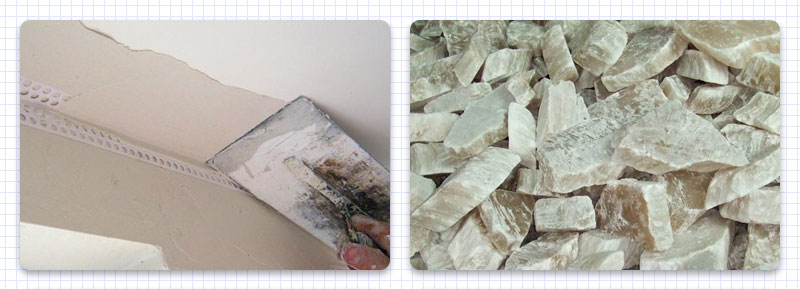What Are the Types of Gypsum Ore and Their Properties?
Gypsum is a calcium sulphate mineral in non-metallic sulphates.
-
in building materials, such as cement retarder, gypsum products for construction and cementing materials;
- as the soil improver, fertilizer and pesticide in agriculture;
- in papermaking, paint, rubber, ceramics, plastics, textile, food, arts and crafts, culture, education and medicine;
- as raw materials for the manufacture of sulfuric acid and ammonium sulfate in the absence of other sulfur resources.
Two main classes of gypsum ore
Generally speaking, gypsum refers to two minerals, gypsum and anhydrite. They are often produced together and can be transformed into each other under certain geological effects.

2 main classes of gypsum ore
14 subclasses of gypsum ore
According to the crystal form, structure and material composition of gypsum, it can be further divided into the following 14 subcategories:
fibrous plaster, giant-pegmatite gypsum, gypsum, argillaceous (clay) gypsum, carbonate gypsum, anhydrite-gypsum, argillaceous (clay) anhydrite-gypsum, carbonate anhydrite-gypsum, gypsum-anhydrite, argillaceous (clay) gypsum-anhydrite, carbonate gypsum-anhydrite, anhydrite, argillaceous (clay) anhydrite and carbonate anhydrite.

14 subclasses of gypsum ore
Fibrous plaster is milky white or wax yellow, with a fibrous structure. Its often in the form of veins, nets, lenses or thin interlayers together with gypsum and anhydrite layers. The blue-gray giant-pegmatite gypsum ore is mainly composed of crystal clusters, granular gypsum and clay minerals.
The colorless and transparent pure gypsum is called selenite, while recrystallized fine granular aggregate is called alabaster (crystal gypsum).
The argillaceous (clay) gypsum ore is gray, blue-gray, gray-black, with the main minerals including gypsum, anhydrite, montmorillonite, hydromica, dolomite, calcite, quartz, organic matter and asphalt. It has the tabular, fibrous, granular crystalloblastic texture, or earthy, massive, lamellar, star structure.
Carbonate gypsum ore is gray, dark gray, granular, brecciated. Its main mineral is gypsum, containing dolomite, calcite and anhydrite.
Anhydrite ore is dense and hard with the color of white, gray or light blue. The main minerals are anhydrite, gypsum (the sum of the two is greater than 85%), a small amount of montmorillonite, hydromica, dolomite, calcite and celestine. It has the granular, scaly, fibrous crystalloblastic texture, or crumby, lamellar, porphyritic, brecciated-vein structure.
According to the mineral composition and content of the ore, the gypsum ore can be divided into the following types:

